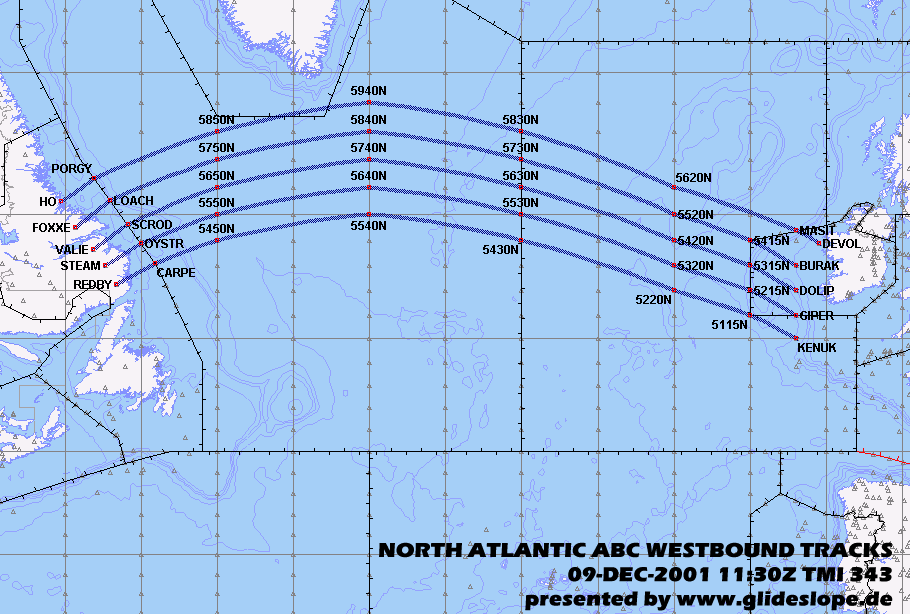
|
HANKE-Aviation GmbH - Flight Crew Training |
|
CHAPTER 2 - ORGANIZED TRACK SYSTEM (OTS) |
GENERAL
As a result of passenger demand, time zone differences and airport noise restrictions, much of the North Atlantic (NAT) air traffic contributes to two major alternating flows: a westbound flow departing Europe in the morning, and an eastbound flow departing North America in the evening. The effect of these flows is to concentrate most of the traffic unidirectionally, with peak westbound traffic occurring between 1130 UTC and 1800 UTC and peak eastbound traffic occurring between 0100 UTC and 0800 UTC, both at 30°W.
Due to the constraints of large horizontal separation criteria and a limited economical height band (FL310–390) the airspace is congested at peak hours. In order to provide the best service to the bulk of the traffic, a system of organized tracks is constructed to accommodate as many flights as possible within the major flows on or close to their minimum time tracks and profiles. Due to the energetic nature of the NAT weather patterns, including the presence of jet streams, eastbound and westbound minimum time tracks are seldom identical. The creation of a different organized track system is therefore necessary for each of the major flows. Separate Organized Track Structures (OTS) are published each day for eastbound and westbound flows.
It should be appreciated, however, that use of OTS tracks is not mandatory. Currently about half of NAT flights utilize the OTS. Aircraft may fly on random routes which remain clear of the OTS or may fly on any route that joins or leaves an outer track of the OTS. There is also nothing to prevent an operator from planning a route which crosses the OTS. However, in this case, operators must be aware that whilst ATC will make every effort to clear random traffic across the OTS at published levels, re-routes or significant changes in flight level from those planned are very likely to be necessary during most of the OTS traffic periods.
Over the high seas, the NAT Region is Class A airspace (at and above FL55), in which Instrument Flight Rules (IFR) apply at all times. However, airspace utilization is under continual review, and in addition to the strategic and tactical use of ‘opposite direction’ flight levels during peak flow periods and the application of Mach Number Technique, a 1000 feet vertical separation minimum has been introduced between FL290 and FL410.

OTS Informations Pilot to Pilot
(C) HANKE-Aviation GmbH 2014